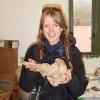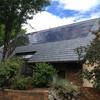About the Group
The number one problem in nature conservation is the need for more money or access to funding. This group aims to help all WILDLABS community members with funding and financing their projects by creating a space to learn about different funding opportunities, income models and business models, improve grant applications, discover venture capital investment projects, find collaborators for funding, finance and business opportunities, and more.
What the Group Offers
The group offers a space to:
- Ask questions and discuss finding and applying for Funding and Finance
- Brainstorm about Funding and Finance wishlists for types of instruments, eligibility criteria, thematic and geographic priorities
- Publish and be alerted to opportunities
- Publish support resources like grant-writing courses, grant-finding databases, consultant-influencers blogs/Medium/LinkedIn, business development, and project planning courses
- Review and comment on opportunities
- Ask for and provide peer feedback on draft applications
- Learn about funding and finance providers’ views and practices
- Learn about business models for companies and income models for NGOs
- Find collaborators or mentors
- Learn about and attend virtual series and events with live discussions relating to funding and finance information and training
- Identify and facilitate opportunities where WILDLABS community members can collaborate on project applications to increase likelihood of success and impact
- Share fundraising collaboration opportunities, events and resources
- Consultation meetings to discuss collaboration plans, aims or ideas, income and business models
Interested in funding opportunities? Check out the WILDLABS resources page and filter for “Funding Opportunity.”
Resources
Header image credit: Jitu Mondal
Group curators
- @Frank_van_der_Most
- | He, him
RubberBootsData
Field data app developer, with an interest in funding and finance





- 57 Resources
- 188 Discussions
- 9 Groups
- @HRees
- | Him/His
WILDLABS & Fauna & Flora
WILDLABS - Programme Development Manager, keen interest in bats, hyenas and tech!





- 15 Resources
- 14 Discussions
- 6 Groups
- @Aurel
- | She/Her
Looking to reconcile biodiversity conservation and finance.


- 2 Resources
- 1 Discussions
- 10 Groups
No showcases have been added to this group yet.
- @Mamalao
- | She
Hi. I am from Jambiani,Zanzibar. I am the lead for Zanzibar Youth for Conservation Initiative. I love my community and would like to it thrive. I welcome any input or donation that maybe be available to better our initiative. Thanks.
- 0 Resources
- 1 Discussions
- 1 Groups
Stop The Desert
Founder of Stop The Desert, leading global efforts in regenerative agriculture, sustainable travel, and inclusive development.

- 0 Resources
- 3 Discussions
- 8 Groups
- @annavallery
- | she/her
Seabird biologist experienced in research and applied conservation. Dedicated to conducting and using innovative research to inform conservation decisions.

- 0 Resources
- 3 Discussions
- 7 Groups
WILDLABS & Wildlife Conservation Society (WCS)
I'm the Bioacoustics Research Analyst at WILDLABS. I'm a marine biologist with particular interest in the acoustics behavior of cetaceans. I'm also a backend web developer, hoping to use technology to improve wildlife conservation efforts.





- 41 Resources
- 38 Discussions
- 33 Groups
University of Exeter
AI and Electronic Engineer interested in insect monitoring and conservation technology. PhD student at the University of Exeter!
- 0 Resources
- 3 Discussions
- 4 Groups
- @HeinrichS
- | he/him
Conservation tech geek, custodian (some say owner) and passionate protector of African wildlife, business systems analyst.





- 0 Resources
- 29 Discussions
- 6 Groups
- @lawaii
- | he/him
Hi, I’m Lawaii, Mother Earth’s son. A biodiversity activist and conservation strategist walking alongside the small islands of the Sundaland Bio-ecoregion Hotspot
- 0 Resources
- 0 Discussions
- 5 Groups
- @YvanSG
- | he/him
Clemson University
Seabird ecologist at Clemson University, South Carolina Cooperative Fish and Wildlife Research Unit. Co-chair of Caribbean Seabird Working Group. Porteur de béret occasionel.



- 0 Resources
- 62 Discussions
- 7 Groups
- @carlybatist
- | she/her
ecoacoustics, biodiversity monitoring, nature tech



- 113 Resources
- 361 Discussions
- 19 Groups
I'm a software developer. I have projects in practical object detection and alerting that is well suited for poacher detection and a Raspberry Pi based sound localizing ARU project



- 0 Resources
- 432 Discussions
- 7 Groups
- @Ebennitt
- | She/her
Working primarily in Botswana and other southern African countries, on wild mammal movement, ecology and physiology


- 1 Resources
- 9 Discussions
- 5 Groups
CREDI-ONG est une organisation non gouvernementale qui a pour mission de Contribuer à l’émergence d’une génération de ‘‘citoyen∙ne∙s du monde’’ aptes à proposer et/ou mettre en œuvre des solutions locales et durables pour un développement humain respectueux de la Nature.
- 0 Resources
- 1 Discussions
- 1 Groups
Making waves in wetland conservation: Explore the outcomes and insights from Ramsar COP15, a premier global event on wetland protection and sustainability
10 August 2025
The AI for Climate Resilience Program is a new initiative by Klarna that aims to support pioneering projects that leverage artificial intelligence for climate adaptation in underserved, climate-vulnerable regions.
6 August 2025
Key words in the finance industry which should no longer be mysterious to conservationists
3 August 2025
To effectively engage with an investor, it's best to grasp key financial and strategic concepts, and understand how an investor thinks. Let's cover the basics
23 July 2025
"Ingenious is a public engagement grants scheme for projects that engage the public with engineers and engineering while providing engineers with training and opportunities in public engagement."
21 July 2025
Lead a growing non-profit to sustain open source solutions for open science!
19 July 2025
Funding
2025 Ebbe Nielsen Challenge seeks innovations for open biodiversity data
17 July 2025
Careers
Superorganism is the first venture capital firm dedicated entirely to biodiversity-positive startups, and they are seeking a new investment team to source and support biodiversity-positive startups.
14 July 2025
The Conservation Nation Grant Program provides funding to help save endangered animals and their ecosystems by building a stronger, more diverse community of conservation practitioners.
10 July 2025
The Big if True Science Accelerator (BiTS) to supports scientists, engineers, and entrepreneurs in transforming bold concepts into actionable program designs.
8 July 2025
Calling conservation organizations working to protect the Asian elephant, apply now for a chance to receive a grant of up to $ 5,000. Proposals are accepted year-round.Photo by Hu Chen on Unsplash.
4 July 2025
Are you interested in applying for The Boring Fund 2025? On this page you can find more information for this opportunity which provides up to $12,500 per project in funding for essential but overlooked aspects of...
2 July 2025
September 2025
event
event
June 2025
event
May 2025
event
March 2025
| Description | Activity | Replies | Groups | Updated |
|---|---|---|---|---|
| Question: the application form link leads to a Google account sign in page. How about those of us who do not have and/or do not wish to have a Google account? Could you tweak the... |
+20
|
Funding and Finance, Community Base | 23 hours 50 minutes ago | |
| Thanks Frank. |
|
Funding and Finance, Community Base | 1 day 16 hours ago | |
| How to submit a proposal for the Boring Fund on the Platform ? |
+26
|
Community Base, Funding and Finance | 3 days 20 hours ago | |
| Dear Colleagues,I hope this message finds you well. I am Manuel Sánchez Nivicela., an independent ornithology researcher based in Ecuador,... |
|
Funding and Finance, Acoustics, Latin America Community | 5 days 1 hour ago | |
| Hi Elsa, We have used InVEST for a pollinator project we supported (the crop pollination model - details here), and looking to using it more for marine and coastal... |
|
Geospatial, Software Development, Climate Change, Funding and Finance, Marine Conservation, Open Source Solutions | 1 week ago | |
| Hello Alex, i am looking for collaborators, partners, advice and also network and investment partners if any |
|
Funding and Finance | 1 week 6 days ago | |
| Thank you for your reply, ChadI meant 10 as a whole, indeed. Perhaps you see your post in one group, but since it is tagged for all groups, I assumed you meant 10 in total.In your... |
|
Acoustics, AI for Conservation, Animal Movement, Camera Traps, Citizen Science, Climate Change, Community Base, Connectivity, Drones, eDNA & Genomics, Emerging Tech, Funding and Finance, Geospatial, Human-Wildlife Coexistence, Software Development, Wildlife Crime | 1 month 3 weeks ago | |
| Passing along a question from the Gathering for Open Science Hardware, asking about sources of funding to support in-person events... |
|
Open Source Solutions, Funding and Finance, Community Base | 2 months ago | |
| Hi Ryan, hmm, I had no idea there was a microphone named that. I thought about how it’s used to lure birds for netting, and I like Greek Mythology. I thought it was a perfect fit... |
|
Acoustics, Emerging Tech, Funding and Finance, Protected Area Management Tools, Software Development | 4 months 1 week ago | |
| I very much agree. It is a shame that companies/organisations are willing to spend so much to take from the earth and so little to give back. In the example I come from, we are a... |
+28
|
Community Base, Funding and Finance | 2 months 4 weeks ago | |
| Hej all, I updated my question to include discussion about the tariffs as well. |
|
Community Base, Funding and Finance | 3 months 2 weeks ago | |
| I have posted about this in a different group, but I love boosting the impact of my communication through use of visuals. Free graphics relating to conservation technology... |
|
Geospatial, Climate Change, Community Base, Connectivity, Funding and Finance, Open Source Solutions | 3 months 2 weeks ago |
The Boring Fund 2025: Ask your questions!
 Henry Rees
and 2 more
Henry Rees
and 2 more
2 July 2025 5:10pm
12 August 2025 3:46pm
Hello Henry
Can someone submit more than one application with different ideas?
15 August 2025 1:13am
Question: the application form link leads to a Google account sign in page. How about those of us who do not have and/or do not wish to have a Google account? Could you tweak the permissions so that someone under this scenario can still submit? Kind regards
How has the Funding & Finance group done?
6 August 2025 9:52am
8 August 2025 5:47pm
Thank you for this amazing summary Frank!
As someone regularly seeking conservation technology funding the posts on the resources page are very very helpful! I only just realized today that those are there and will now be checking back regularly.
In terms of general feedback, it would be very useful to be able to subscribe to receive email notifications of new funding opportunities posted on the resources page.
Thanks for all you do!
11 August 2025 6:21pm
Hi Frank,
First thanks to you, Henry, and Aurélie for making this group happen. It's much needed. This probably isn't that useful, but I find all three useful (announcements, resources, ?s). One big quest for me and others is, once you find the funding source that fits, how do you make the application easier to put together, e.g., are there parts of a proposal or application you can automate (not using AI to write, just automating the boring stuff)? Or could you utilize coding and AI to extract the necessary components from an RFP and structure the files and sections within them to then write and develop the budget? Super exciting stuff, but it gets tedious when you have a lot of proposals, each with their own slightly different requirements.
There are some software solutions for this, but they're business oriented, expensive, and proprietary. This is really more funding solutions than funding but wondering if there's any interest in a team pursuing something that helps with this?
Best,
V
14 August 2025 3:17am
Thanks Frank.
The Boring Fund 2024: Ask your questions!
16 September 2024 5:59pm
9 October 2024 9:05pm
Thanks! That’s something to consider then! I always think abt going to Huaqiangbei market in Shenzhen, and buying there for big savings. But it feels like it might a recipe for getting scammed, if you don’t speak the language!
21 October 2024 11:21am
Hi,
I lost track of the timeline; the Green Box submitted an idea for development, but I have not received any further communication. Could you please remind me what the timetable is, and if we will get feedback on our applications (knowing we are not the only ones with ideas, I can imagine the workload this has given)?
I am looking forward to your reply and insights.
Best wishes,
Gijs
12 August 2025 10:43am
How to submit a proposal for the Boring Fund on the Platform ?
Zimbabwe Shines: 5 Key Takeaways from Ramsar COP15
10 August 2025 11:56pm
Suggestions for research funds
10 August 2025 5:56pm
Anyone using InVEST?
10 July 2025 1:31pm
5 August 2025 7:27pm
If you're curious about InVEST I just created a page in "The Inventory" (see link on this page) with some resources and just wanted to hlighlight some potentially interesting models that are worth having a look at!
- Habitat Quality: this model uses habitat quality and rarity as proxies to represent the biodiversity of a landscape, estimating the extent of habitat and vegetation types across a landscape, and their state of degradation.
- Habitat Risk Assessment: this model evaluates risks posed to coastal and marine habitats in terms of exposure to human activities and the habitat-specific consequence of that exposure for delivery of ecosystem services.
Crop Pollination: this model focuses on wild pollinators providing an ecosystem service. The model estimates insect pollinator nest sites, floral resources, and flight ranges to derive an index of pollinator abundance on each cell on a landscape. If desired, the model can creates an index of the value of these pollinators to agricultural production, and attributes this value back to source cells.
7 August 2025 7:40pm
Elsa,
We have been working with InVEST for a number of years. We have found them helpful for conservation and scenario planning. Happy to share as helpful.
John
8 August 2025 2:23pm
Hi Elsa,
We have used InVEST for a pollinator project we supported (the crop pollination model - details here), and looking to using it more for marine and coastal applications so really appreciate the details you shared here!
Cheers,
Liz
Klarna’s AI for Climate Resilience Program
6 August 2025 6:32pm
Tech4Nature Presents: 2025 Innovation Challenge Workshop Series - Registration Now Open!
6 August 2025 5:09pm
Tech4Nature Presents: 2025 Innovation Challenge Workshop Series - Registration Now Open!
6 August 2025 5:09pm
Finance Glossary for Conservationists
3 August 2025 3:40pm
Championing Decentralized Energy for Sustainable Growth & Regenerative Financele here
27 July 2025 11:41am
31 July 2025 11:13am
Thank you for bringing our attention to regenerative finance, Mr. Tumi. I appreciate it very much, and would like to learn more about this. Could you please refer to online sources describing that financial philosophy and the mini-grid systems?
31 July 2025 4:39pm
Hi Yusuf! Thanks for sharing this. What are you looking for from the WILDLABS community? (Collaborators, advice, networking, etc.)
2 August 2025 1:31pm
Hello Alex,
i am looking for collaborators, partners, advice and also network and investment partners if any
How to speak investors’ language?
23 July 2025 1:52pm
1 August 2025 10:04am
3 August 2025 3:25pm
Ingenious public engagement grants (£3K-30K)
21 July 2025 2:42pm
Executive Director for the Open Science Hardware Foundation
19 July 2025 2:15pm
2025 Ebbe Nielsen Challenge
17 July 2025 2:34pm
Investment Team Member
14 July 2025 3:22pm
Conservation Nation Grant Program
10 July 2025 7:37pm
Big if True Science Accelerator (BiTS)
8 July 2025 6:42pm
CSS Asian elephant rapid response grant
4 July 2025 9:31pm
The Boring Fund 2025: Further Information
 Henry Rees
and 2 more
Henry Rees
and 2 more
2 July 2025 5:09pm
26 July 2025 11:37am
The Boring Fund 2025: Apply Today
 Henry Rees
and 2 more
Henry Rees
and 2 more
2 July 2025 5:09pm
Practice guidance for protected and conserved area finance
19 June 2025 2:01pm
New Group Proposal: Systems Builders & PACIM Designers
18 June 2025 2:52pm
19 June 2025 9:08am
Hi Chad,
Thanks for the text. As I read it, PACIMs play a role in something else/bigger, but it doesn't explain what PACIMs are or what they look like. Now I've re-read your original post, I'm thinking, maybe I do understand, but then I feel the concept is too big ( an entire system can be part of a PACIM ? ) to get going within a WildLabs group. And you want to develop 10 PACIMS within a year through this group? Don't get me wrong, I am all for some systems change, but perhaps you're aiming too high.
19 June 2025 12:19pm
Hello again sir - PACIMs really mean 'projects' is the way I see it. Each part of the acronym can be seen as a project (if you have an assignment to do, you have a project really).
As for your query on 10 projects in 'this' group - I should ask for clarification if you mean particularly acoustics or in any group (I see now this is the acoustics thread after I selected all the groups for this post). If you are asking on acoustics, you're right - I am unsure on 10 as I am not too keen on acoustics yet. If you are asking 10 projects as a whole like 10 projects in the funding and finance group - I believe 10 to be a very reasonable number. Our projects we have co-created are for the most part replicable, rapidly deployable, quickly scalable, fundable through blended finance and more.
Thank you again for the feedback.
19 June 2025 1:43pm
Thank you for your reply, Chad
I meant 10 as a whole, indeed. Perhaps you see your post in one group, but since it is tagged for all groups, I assumed you meant 10 in total.
In your first post you explain PACIM stands for "Projects, Assignments, Campaigns, Initiatives, Movements, and Systems", so I understood it as more than just projects. Obviously, many things can be packed into a project or called a project, but then, what does it mean that 'Projects' is part of the list?
Well, if you think 10 projects is doable, then don't let me stop you.
Help the Funding and Finance group
17 June 2025 1:22pm
19 June 2025 5:05am
19 June 2025 8:47am
Suggestions for finding event funding (for GOSH)?
9 June 2025 11:47am
Oportunidad de financiamiento para mujeres en conservación
30 May 2025 3:15pm
Field-Ready Bioacoustics System in Field Testing
2 April 2025 10:38am
3 April 2025 3:38pm
Hi Carly,
Thanks so much for your thoughtful message—and for introducing me to Freaklabs! BoomBox looks awesome, and it’s exciting to see how closely our goals align. There’s definitely potential for collaboration, and I’d be happy to chat more. Their system is super efficient and I think both of our systems have a place in this space.
Affordability and reliability were key considerations when I started building Orpheus. I wanted to create something rugged enough to survive in the field year-round while still being accessible for conservationists with limited budgets. The full-featured unit is €1500, and the basic model is €800. That pricing reflects both the hardware and the considerable time I’ve spent writing and refining the system—it’s all about balancing performance, durability, and keeping it sustainable for the long term.
Even the base unit is more than just a playback device. It logs every playback event, duration, and species, with enough onboard storage for two years of data, and it automatically converts the logs to line protocol for easy integration into platforms like InfluxDB.
On top of that, Orpheus actively logs and graphs temperature, humidity, atmospheric pressure, and battery voltage. During deep sleep, it interpolates the environmental data to preserve meaningful trends without wasting energy. You can view any of these on it's 5" touch screen or view it in the cross-platform app that will support both Android and IOS once I'm done programming it.
As for audio specs:
- Recording is supported up to 96kHz,
- Playback is full 24-bit, both MP3 and WAV formats
- The system currently supports recording audio clips, reviewing them, and even adding those clips directly to playlists on the device.
That said, for bat research, I know ultrasonic capability is essential. While the current hardware doesn’t capture over 100kHz, I’ve already done the research and identified alternative audio interfaces that would support that range. If that’s a need researchers are interested in, I’d be open to building out a dedicated version to meet those requirements.
Power-wise, it runs indefinitely on solar, even under partly cloudy conditions. It uses a LiFePO₄ battery, and depending on usage, it can operate for up to two weeks on battery alone. It also supports external power from 12V or 24V systems, and solar input from 12V to 70V, so it’s pretty adaptable to various field setups. it also can operate from -5 to 70C (still testing that), but the hardware should be capable according to specs. Your correct though in places like the rain forest that could be challenging and an alternative would need to be considered.
The software is written modularly to allow for expansion based on user needs. For instance, I’ve already integrated support for a rain sensor that can pause playback if the user chooses that, and could easily include PIR, microwave, or other sensors for more specialized triggers.
Regarding durability, I’m currently testing mesh cable sheathing to deter rodents and other wildlife from chewing the wires—this was a concern raised by one of the teams using Orpheus, and I’m designing around it.
Also, Orpheus includes a seasonal scheduling engine—you can define your own seasons (like Migration, Breeding, etc.) and assign unique playback playlists to each. The device uses astronomical data (sunrise/sunset) based on your provided lat/lon and time zone, and automatically adjusts timing offsets like “1 hour before sunrise.” The goal is truly fire-and-forget deployment.
I'm open to adding any features or sensors that might be useful within reason.
I’m curious though, what specs would make a recording device for bats an indispensable tool? What features don’t already exist on the market that should?
Warm regards,
Travis
5 April 2025 4:03pm
I love the look of the system! We almost called our new sensor Orpheus, but decided against it as there is already a microphone named that! I'd love to see a bit more about the technical implementation! Is this running off of a CM5 or something different?
6 April 2025 1:45pm
Hi Ryan, hmm, I had no idea there was a microphone named that. I thought about how it’s used to lure birds for netting, and I like Greek Mythology. I thought it was a perfect fit, but hmm, May have to change the name. I considered using a CM, but i wanted the system to be as efficient as possible. I am using a RPI Zero 2 W with emmc. To ensure the UI stays responsive I used some backend tricks like thread pooling. It works well and resources stay in check. The challenging part is ensuring thread handling is done gracefully and carefully to prevent race conditions. What sort of sensor have you been developing?
Announcing the WILDLABS Awards 2025 Grantees
20 May 2025 2:32pm
22 May 2025 10:00am
26 May 2025 5:25pm
1 August 2025 10:46am
Brokering finance deals to fund nature restoration with Rob Gardner
16 May 2025 9:30am
Must profit be part of the environmental solution?
12 February 2025 10:24pm
7 May 2025 8:37am
7 May 2025 9:00am
I think you answered your own question Frank. If grants are out of the question and you actually want results at scale, profit is your only option. For the people/companies with something to offer and no funds in any case.
In my opinion, wildlife initiatives as a commercial target alone I would say is even harder than the more general IT market as the wildlife market is much smaller market with limited funding, especially this year. So that means that the company is likely going to have to target normal markets to be viable, with wildlife as a side project for them in principle in the most cases. And there's a limited commercial market for wildlife initiatives, so philantrophy would likely also have to be part of the equation.
In today's world with a lot of horrific people with a lot of power, we need to encourage people to realise that success is not just about making money, but also about being a good person and contributing to the planet. Unfortunately, a lot of people with enormous amounts of money and enormous egos seem to equate success only with money and greed. With a few exceptions. We need more exceptions.
16 May 2025 8:14am
I very much agree. It is a shame that companies/organisations are willing to spend so much to take from the earth and so little to give back. In the example I come from, we are a team of pure citizen scientists that give all our time for free to perform shark research. In my case, those same volunteers often use money from their own back pocket to keep the project going. We also rely heavily on the generosity of Conservation X to keep our software running and the servers alive.
Technology is not cheap to run. Every server uses electricity and as we all know its going up in price.
It is a very scary situation when I know that all shark research that we are performing with Spot a Shark (and is being relied on by scientists to publish studies) is funded by nothing more than favours and donations. If that all ended tomorrow, do we just stop all research, awareness, campaigning etc and hope for the best?
My view is that it ultimately comes down to the government to ensure that conservation is valued. Take extra taxes from the wealthy organisations / banks etc and fund this stuff. I am sure if people like Mark Zuckerberg etc can afford a $900k watch to wear on their wrist, they could afford to support conservation.






























































12 August 2025 2:43pm
Have done that. Thank you.